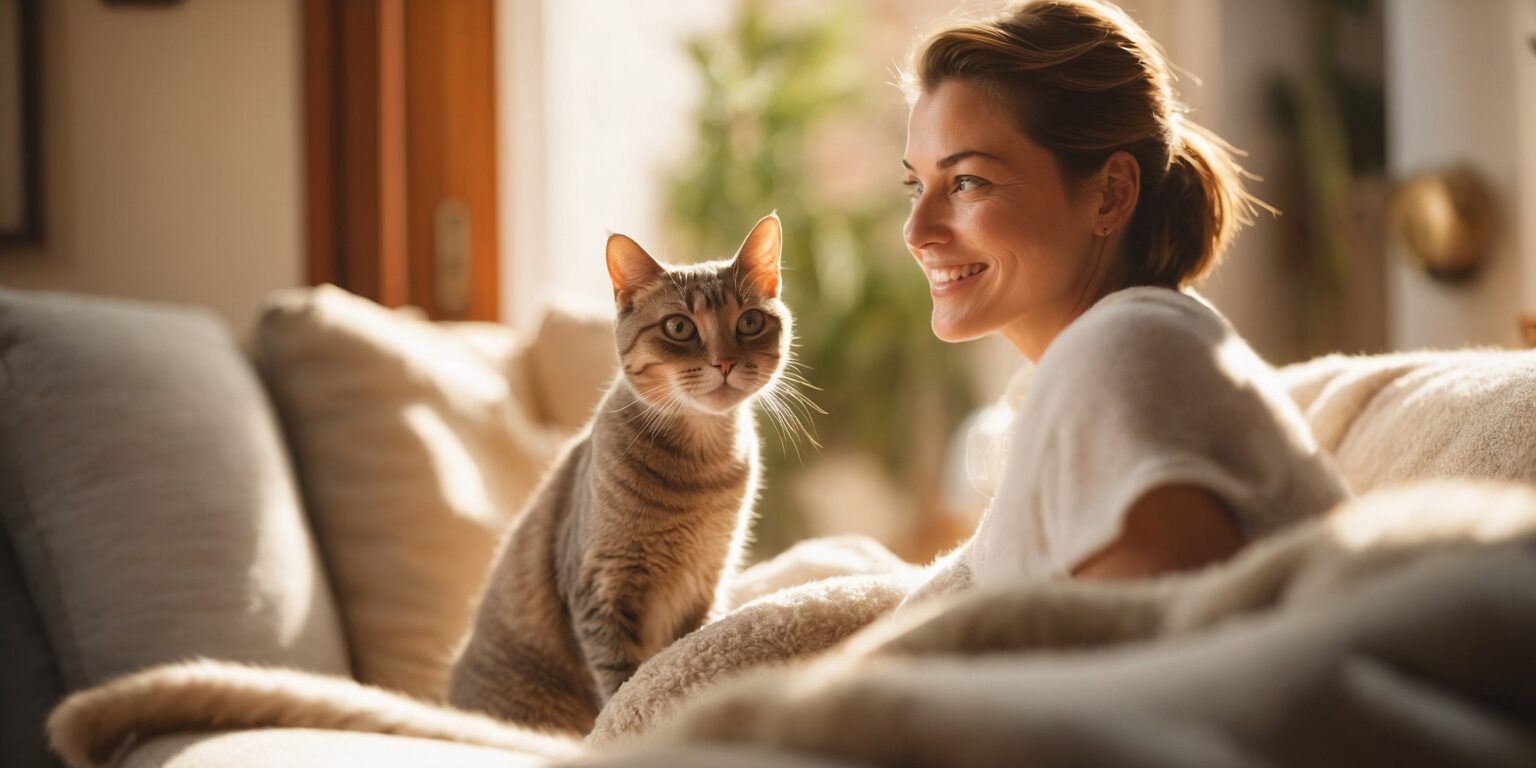Why understanding your cat matters in 2024
Our cats aren’t just cute roommates; they’re little emotional universes with whiskers. In 2024, we spend more time at home, and their well-being is braided into ours. Understanding them isn’t a luxury—it’s the secret to a calmer home and a deeper bond.
Think of it as learning a gentle new language. Once you “speak cat,” everyday life gets easier: fewer scratches on the sofa, fewer meows at 3 a.m., more cuddles on the couch. Tempted?
Reading your cat’s body language
Cats talk with their whole body. From the tip of the tail to the twitch of a whisker, every detail counts. Watch them in different moments—before dinner, after play, near a window—and patterns start to appear.
Ears, eyes, whiskers: tiny clues with big meanings
- Ears forward: curious or playful. Slightly back: wary. Pinned flat: scared or defensive—give space.
- Eyes: slow blinks are kitty kisses; dilated pupils can mean excitement or anxiety (context matters).
- Whiskers: swept forward signals interest; pulled back can signal discomfort.
Fun fact: A cat’s nose print is unique—just like a human fingerprint. Adorable and one of a kind.
Tail talk you can trust
- Tail held high with a soft curve: confident and happy.
- Puffed tail: startled or threatened—reduce stimuli and let them retreat.
- Gently swaying tip: focused—often seen during “hunt mode” with toys.
If tails fascinate you, dive deeper into why cats wag their tails and learn the subtleties that change a moment.
Health essentials for modern cats
Prevention is still your best superpower. A healthy cat gets routine checks, clean teeth, a balanced diet, and daily play. Small habits today save big worries tomorrow.
Daily wellness checklist
- Weight: Keep a waistline visible from above and ribs that are easy to feel, not see.
- Hydration: Offer fresh water in wide bowls or a fountain. Many cats prefer shallow, wide dishes that don’t touch their whiskers.
- Teeth: Tartar builds fast. Try dental treats, gels, or short brushing sessions a few times a week.
- Parasites: Use year-round prevention; flea and worm protection matters even for indoor cats.
- Play: 2–3 short sessions daily to keep joints and mind sprightly.
Practical tip
Turn dinner into a mini adventure: split their meal into two small bowls placed in different rooms. It mimics the “hunt,” adds steps, and slows down fast eaters.
Common mistake to avoid
Stop using spray bottles or scolding for “bad” behavior. It creates fear and damages trust. Redirect instead—offer a scratching post where they scratch, reward when they use it, and make the wrong spot boring.
For protection from unwanted tummy guests, keep a simple plan handy with this complete guide to protecting your cat from worms.
Feeding your cat with confidence
What should land in their bowl? Think quality animal protein first, moderate fat, and minimal fillers. Check the first ingredients—if meat isn’t leading the parade, keep browsing.
Smart label habits
- Protein source first: “Turkey,” “chicken,” or “salmon” before “meal” or “by-products.”
- Shorter is sweeter: Fewer vague additives, clearer ingredients.
- Life stage matters: Kitten, adult, and senior needs differ—so should the food.
- Sensitive bellies: Transition slowly over 7–10 days to prevent digestive upsets.
Curious about what truly fuels a healthy coat, energy, and digestion? Explore this guide on what cats should really eat and shop with confidence.
Positive training that actually works
Yes, cats learn beautifully—when we ask the right way. Reward what you love and ignore what you don’t. It’s simple, kind, and effective.
Easy games to try today
- Two-second sit: Lure a sit with a treat; the second those paws tuck, say “yes!” and reward. Repeat, then add the word “sit.”
- Target touch: Present a finger or target stick; when the nose boops, treat. It’s a playful path to recall and carrier training.
- Clicker fun: Pair a click with treats for a week; then use clicks to mark the exact moment your cat does what you want.
Scratching drama at home? Set them up for success with placement, materials, and rewards using these furniture-sparing scratching tips.
The future of your bond
Our lives are busy, but your cat’s needs are beautifully simple: safety, routine, play, and love. When you read their signals, feed thoughtfully, and train with kindness, life together becomes wonderfully soft around the edges.
FAQ
How can I tell if my cat is stressed?
Watch for hiding, over-grooming, reduced appetite, or sudden litter issues. Increase predictability, add hiding spots, and schedule daily play to ease tension.
How much should my cat play each day?
Most cats thrive on 10–15 minutes, 2–3 times daily. Use wand toys for chase, then end with a small snack to complete the “hunt.”
Is wet or dry food better?
Both can work. Wet boosts hydration; dry adds convenience. Many owners mix them. Prioritize high-quality protein and your cat’s specific needs.
Why does my cat sleep so much?
Cats sleep 12–16 hours a day. It’s normal. Offer short, intense play sessions to keep muscles and mind active between naps.







